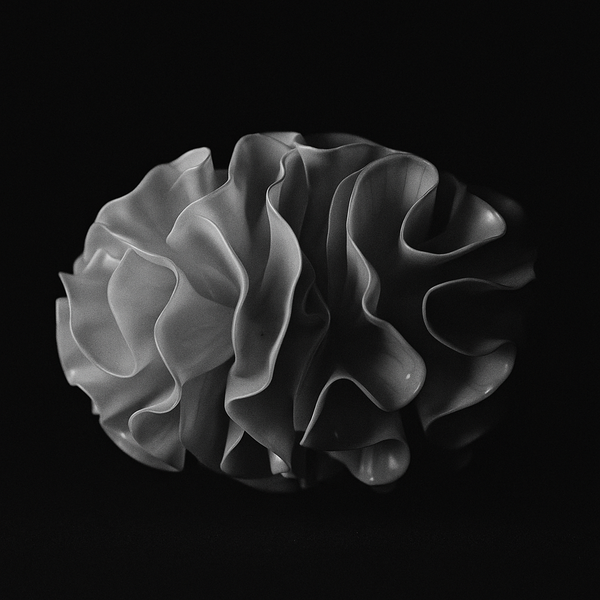Echoes of the Past: AI Predicts the Unseen Harm of Data Rot

The last tyrannosaurs walked through lush Cretaceous forests, unaware that cosmic dice had already been thrown. Millions of years later, we're building artificial minds on foundations that may be quietly crumbling beneath us. The parallel isn't perfect—no asteroid threatens our data centers—but the pattern of invisible degradation leading to systemic collapse deserves our attention.
Consider how modern AI systems learn: they consume vast corpuses of text, images, and structured data, extracting patterns that become their understanding of reality. Large language models train on massive text datasets. Image generation models ingest billions of image-text pairs. These models don't simply memorize; they compress human knowledge into mathematical representations, creating what we might call synthetic intuition. But what happens when the source material begins to decay?
The Entropy Tax on Digital Memory
Data rot operates through multiple vectors, each mundane in isolation but devastating in aggregate. Link rot renders URLs inaccessible over time, with web pages disappearing at measurable rates. Format obsolescence renders files unreadable as software evolves. Bit rot silently flips zeros to ones in storage media. More insidiously, what researchers call "semantic drift" occurs when the meaning of data changes over time without the data itself changing.
A medical AI trained on diagnostic images from 2010 doesn't know that imaging protocols have evolved. A language model trained on pre-2020 text has no conception of how profoundly pandemic vocabulary shifted our discourse. These aren't bugs in the traditional sense—they're temporal artifacts, fossils of outdated understanding embedded in mathematical matrices.
The challenge compounds when AI systems begin training on AI-generated content. Research demonstrates that training language models on synthetic data creates progressive degradation where each generation loses nuance and diversity. It's reminiscent of making photocopies of photocopies, each iteration losing fidelity until only shadows remain.
When Feedback Loops Become Extinction Events
The dinosaurs' extinction wasn't instantaneous. The asteroid impact triggered cascading failures: darkness killed photosynthesis, herbivores starved, carnivores followed. Similarly, data degradation in AI systems doesn't manifest as sudden failure but as creeping incompetence.
Consider autonomous vehicles trained on pristine datasets of well-marked roads and clear weather conditions. As infrastructure ages and climate patterns shift, the gap between training data and reality widens. A self-driving car's perception system, trained on current road markings, might struggle with the faded, patched, and modified lanes of the future. The model hasn't forgotten how to drive—reality has drifted from its training distribution.
Financial AI systems face similar temporal challenges. Models trained on decades of market data embed assumptions about correlation patterns, volatility ranges, and market microstructure. But markets evolve. High-frequency trading has fundamentally altered price formation. Cryptocurrency has introduced new asset correlations. Central bank interventions have broken historical relationships between interest rates and inflation. An AI trader operating on outdated patterns isn't just suboptimal—it's potentially catastrophic.
The Architecture of Resilience
Nature offers instructive examples of robustness through redundancy. DNA's double helix provides error correction through complementary base pairs. Ecosystems maintain stability through diverse species filling overlapping niches. Our AI infrastructure needs similar defensive depth.
Version control for datasets represents one approach. Just as software developers track code changes through Git, we need immutable logs of data evolution. Blockchain technology, despite its hype-cycle fatigue, offers genuine utility here—creating tamper-proof records of what data existed when, and how it transformed over time.
More fundamentally, we need what I call "temporal awareness" in AI systems. Rather than treating training data as timeless truth, models should understand the vintage of their knowledge. A medical AI should know whether its understanding of treatment protocols comes from 2015 or 2025. A legal AI should recognize when case law has superseded its training examples.
Living Memory Systems
The solution isn't simply preserving data in amber—it's creating systems that can gracefully handle degradation. Consider how human memory works: we don't store perfect recordings but rather reconstructable patterns. We forget details but retain concepts. We update beliefs based on new evidence. This lossy but adaptive approach might offer a template for more robust AI.
Continuous learning presents one path forward. Rather than training massive models once and deploying them indefinitely, we need architectures that can incorporate new information while retaining valuable historical context. This isn't trivial—catastrophic forgetting, where neural networks lose old knowledge when learning new tasks, remains an active research challenge.
Another approach involves what researchers call "uncertainty quantification"—teaching AI systems to know what they don't know. A model aware of its knowledge boundaries can flag when it's operating outside its training distribution, requesting human oversight or additional data rather than confidently hallucinating.
The Conservation of Complexity
The dinosaurs' extinction ultimately cleared ecological niches for mammalian radiation. Their end became our beginning. Similarly, the challenges of data rot might force us toward more robust, adaptable AI architectures. The constraints become design drivers.
We're already seeing early examples. Retrieval-augmented generation allows language models to query external databases rather than relying solely on training data. Federated learning enables models to learn from distributed data without centralizing it, reducing single points of failure. These aren't complete solutions, but they represent evolution toward resilience.
The deeper lesson from both extinction events and technological evolution is that complexity cannot be eliminated, only managed. Every system sophisticated enough to be useful is complex enough to fail in unexpected ways. The goal isn't perfection but graceful degradation—systems that bend rather than break, that degrade predictably rather than catastrophically.
As we build artificial minds that increasingly shape our world, we must remember that durability matters as much as capability. The most powerful AI system is useless if its training data has rotted beyond recognition. The most sophisticated algorithm fails if it can't adapt to temporal drift.
The dinosaurs had no choice in their fate. We do. By recognizing data rot as an existential challenge rather than a technical annoyance, by building systems that expect and accommodate degradation, by creating living architectures that evolve with their environment, we can avoid our own extinction moment. The future of AI depends not just on making systems smarter, but on making them last.
References
- https://apnews.com/article/55cb47773edd0061572cbaac51929ffa
- https://arxiv.org/abs/2510.13928
- https://www.sciencenews.org/article/dinosaurs-thriving-before-asteroid
- https://www.nationalgeographic.com/science/article/dinosaurs-thriving-extinction-asteroid-new-mexico
- https://abcnews.go.com/Technology/wireStory/dinosaurs-thriving-north-america-mass-extinction-asteroid-strike-126807633
- https://www.imperial.ac.uk/news/190446/dinosaurs-were-thriving-before-asteroid-strike
- https://www.ed.ac.uk/news/2022/dinosaurs-were-on-the-up-before-asteroid-downfall
- https://www.sciencedaily.com/releases/2022/12/221207142210.htm
- https://arstechnica.com/science/2025/10/dinosaurs-may-have-flourished-right-up-to-when-the-asteroid-hit
- https://www.independent.co.uk/independentpremium/world/dinosaurs-asteroid-study-cretaceous-mammals-b2241610.html
- https://phys.org/news/2019-03-dinosaurs-asteroid.html
- https://www.eurekalert.org/news-releases/552704
- https://www.ucl.ac.uk/mathematical-physical-sciences/news/2019/mar/dinosaurs-were-thriving-asteroid-strike-wiped-them-out
- https://arstechnica.com/ai/2025/10/researchers-show-that-training-on-junk-data-can-lead-to-llm-brain-rot
Models used: gpt-4.1, claude-opus-4-1-20250805, claude-sonnet-4-20250514, gpt-image-1




